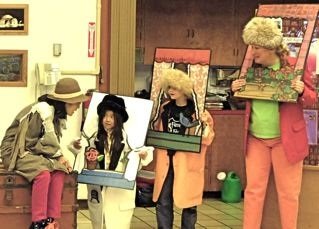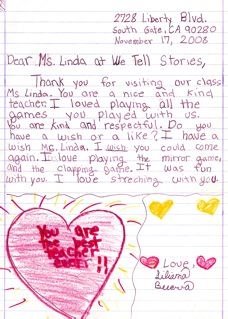HOW CAN EDUCATORS APPLY THE CALIFORNIA THEATRE ARTS STANDARDS to student learning? When children experience We Tell Stories shows they are seeing, listening, and processing theatre concepts, creating characters from their seats, using their voices and gestures, experiencing stories from different cultures and times, applauding, participating, comparing, reviewing, analyzing and making connections to other art forms. After they have seen a show they’ve made a connection to all five strands of the California Content Standards in Theater. Educators can apply the standards in the classroom by having students act out scenes from stories. When students act out stories, they are connecting language arts and theatre arts. Through their execution they are learning the language of the theatre.
The following definitions of the strands are listed below along with examples of how the standards apply to student learning.
1. Artistic Perception: Processing, analyzing, and responding to sensory information through the language and skills unique to theatre.
Children see others perform. They form ideas, internalize stories and identify the character's needs.
2. Creative Expression: Creating, performing and participating in theatre.
When children are given the opportunity to retell stories or act out scenes they are speaking, gesturing, playing a character, working together as an ensemble, wearing costumes, being creative!
3. Aesthetic Valuing: Responding to, analyzing and critiquing theatrical experiences.
Children respond by analyzing, applauding, clapping, and laughing. Students can write reviews.
4. Historical and Cultural Context: Understanding the historical contributions and cultural dimensions of theatre.
Children hear stories from different cultures and times, (myths, folklores and fables) when they see We Tell Stories shows. Teachers can use stories from different cultures in the classroom and have students research the period in which the stories takes place.
5. Connections, Relationships, Applications: Connecting and applying what is learned in theatre to other art forms, academic subject areas and careers in theatre.
Children are increasing their language arts skills when they are speaking in front of an audience. They learn about staging when they act out scenes and they learn to work cooperatively together as a group whenever they do theatre exercises.
Joyce Lee
Director of Education Programs @ We Tell Stories
Highland Park’s New Friend
12 years ago



No comments:
Post a Comment